The Melting Pot - Grand Theft Auto V's Los Angeles
By Starshine_M2A2 0 Comments
"The smog was heavy, my eyes were weeping from it, the sun was hot, the air stank, a regular hell is L.A."
- Jack Kerouac
At the turn of the 20th century, a Jewish immigrant penned a stage play after having had the chance to absorb the fusion of American life with other emigrating cultures. It was entitled 'The Melting Pot' and although its story has long been forgotten, its title has become one of the most common descriptions of the city of Los Angeles. Today, it is used to describe a city that has no fixed identity, is recognised as one of the most culturally diverse places in the world and whose very existence is obscured under an orange haze of heat, smog and dust.
The city's chaotic and contradictory nature is entrenched in virtually every aspect of the its environment; As the heart of American popular culture, the world recognised Hollywood sign stands tall as a symbol of the American dream. Yet it is a symbol juxtaposed with what the LAPD once referred to as "the gang capital of the nation" among the poverty stricken suburbs resting below the Hollywood Hills. It is a city with a long history of illegal immigration problems illustrated by a number that has now reached 2.6 million according to the University of Southern California. But it is also a problem that has been one of the contributing factors to the city's multicultural identity - an identity that is now so entrenched that many inner-city schools are attended solely by minorities legal or otherwise.
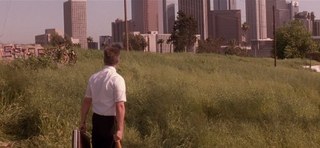
Like the city itself, depictions of Los Angeles in popular culture are endlessly diverse with each rendition attempting to tackle a different issue. Changeling (2008) commented on corruption within the LAPD of the 1930s whereas Gangster Squad (2013) chose to focus on the city's history in dealing with organised crime. Michael Mann's Collateral (2004) took a more aesthetic approach using digital photography to depict the chaotic nightlife in a blur of neon signs and car headlights while coyotes aimlessly wander across highways. But for all these titles' intellectualism, arguably the most successful analyses of life in contemporary Los Angeles was Falling Down (1993). Rather than dealing with wider political or cultural subjects, the film depicted one ordinary man pushed too far by the smog filled, gang polluted city and whose 'mission' to return home was continuously hampered by arrogant yuppies, neo Nazis and retired billionaires. It succeeded in highlighted both the suffocating heat of an overcrowded metropolis and the difficulties in navigating a space that seems torn between countless different cultures.
Now blessed with the ability to create large scale depictions of real life cities, the freedom offered by video games to explore and soak up environments at the player's desired pace has enabled Rockstar Games to effectively meld all of the above examples into one package resulting in a genuine fusion of colour, culture and crime - the likes of which are rendered impossible by film's reliance on fixed story structures which usually prevent the focus on multiple ideas.
Represented in Grand Theft Auto V by the city of Los Santos, its real life counterpart's multicultural identity is one of the first subjects confronted with the presence of multiple protagonists, all of whom are of different backgrounds and race. First, Michael is depicted as the organised crime element of the city. He is often seen wearing mafia-style suits, speaks with a slightly gruff Godfather-likeaccent, is an expert at planning heists and is under a witness protection program that recalls the later life of bona fide gangster Henry Hill. Franklin, reminiscent of Carl Johnson, fills a 'Boyz N the Hood' role as an African American low income criminal living in a broken down neighbourhood. Making heavy use of cultural and racial slang that has now become synonymous with the gang occupied residential districts of Los Angeles, Franklin is the only native among the three and is presumably intended to represent the city's diverse racial population. Finally, Trevor is a Canadian who is routinely chastised by people he meets for being north of the border. This includes his encounters with the Civil Border Patrol, a fascist right wing duo who pursue and arrest immigrants regardless of their legal status.
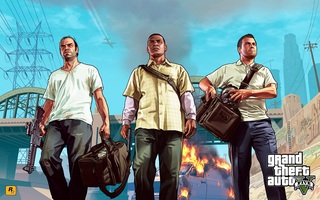
Over the course of the game's first act, the three slowly end up mixing with each other as they are drawn into mutual criminal arrangements that involve protecting one another's business operations, performing heists and rescuing each other from their rivals. Illustrating the fusion of different cultural backgrounds, missions that see the three working together provide them with unique roles integral to overall success; Franklin, who begins the story as a car thief is usually the driver of a getaway vehicle while Trevor's history as an air force pilot sees him given airborne assignments which include spotting targets for Franklin or Michael using infared cameras. Together, they occupy a character wheel on the bottom right of the player's HUD as if providing a menu of different races and cultures that can be selected at will specifically for their special and unique abilities they bring to the whole. This focus on multicultural cooperation is only reinforced by the absence of character exclusive missions within the core story. The concept of multiple protagonists of varying race may have even contributed to the idea of setting the game in a city modeled after Los Angeles. Particularly considering that no other American city has had such long standing problems with both immigration and crime that have been argued countless times by individuals such as Manhattan Institute scholar Heather MacDonald to be far from mutually exclusive. According to her studies, 95 percent of homicide warrants were at one point solely targeted at illegal immigrants.
So what of the Los Santos itself? The Grand Theft Auto series has been long focused on creating believable cities for the player to occupy. But with the series now in its fifth generation, what separates each representation of a metropolis other than simply providing a different layout to explore? Over the course of playing GTAV, I found the best way of answering that was by comparing it to the depiction of New York in Grand Theft Auto IV (2008) which is vastly different both in aesthetics and personality. GTAIV is often remembered for its ultra-serious approach to representing New York by removing many of the more bizarre features that had emerged in Grand Theft Auto: San Andreas (2004). This included the ability to gain and lose weight, add and remove tattoos, hijack trains and jets and mow pedestrians down with a combine harvester. In their place was a far more depressing and moody game world with an almost completely grey colour palette while the story dealt with no-nonsense gangsters and deep-rooted psychological issues inherent to Nikko Bellic's past. This approach, while a departure from traditional Grand Theft Auto games, may have worked for a setting reminiscent of New York but Los Angeles requires a far different outlook that virtually demands a return to the more outlandish features of past titles in order to properly convey a more confused space.
To reflect the confused nature inherent to L.A., Los Santos is far more open and colourful than Liberty City. Night time reveals a neon drenched downtown, filled with nightclubs, bars and heavy use of building and streetlights that almost resembles the use of colour seen in Ridley Scott's Blade Runner (1982), a futuristic interpretation of a decaying Los Angeles. The streets are far wider with a greater amount of vegetation comprised of palm trees and forest surrounding the Vinewood Hills. This is not merely a stylistic choice based on the setting. This hypnotic blurring of colour serves as a reflection of the often nonsensical space the player occupies throughout the course of the story. Due to having multiple protagonists, the story continuously lurches from one scenario to the other as both environment and character change in the blink of an eye. At no point is this more obvious than the transition from Michael and Franklin sitting in the former's spacious, Italian Renaissance themed mansion watching a widescreen television to Trevor's messy trailer situated in the middle of the desert. Things only become more muddled as each character finds himself moving into spaces that do not reflect their backgrounds or personalities. Franklin suddenly finds himself in possession of a mansion in an area of the city usually reserved for celebrities while also being 'employed' by paparazzos and super rich car dealers. Likewise, Trevor becomes embroiled in real estate and mixes with the rich and famous when he is asked by a celebrity obsessed couple to steal possessions from film and music stars.
All of this gives the impression of a damaging shift between zones of cultural influence which is even depicted as having a dehumanising effect in Michael's case. The promise of the American dream that is so invitingly advertised by the Hollywood (or Vinewood) sign has become something of a nightmare. His transition from snowy North Yankton to Los Santos sees him landed with all manner of psychological issues that appear serious enough to warrant therapy sessions. Once Trevor tracks him down he routinely mocks his changed pursuit of a blissful family life commenting that the city itself has turned him 'soft'. Trevor himself appears to be the only character who is fully aware of the city's suffocating power as he airs his resentment for journeying to Los Santos while overlooking the night time lights with Wade.

From a gameplay perspective, the freedom offered to the player in this franchise is defined by excess - both literally and figuratively. But with this installment using a city like Los Angeles as it's template, there results a new kind of decadent chaos that has been absent in past titles. The absurdity of being able to fire rockets into oncoming traffic is nothing new in the Grand Theft Auto series except it now takes on a somewhat different meaning when dealing with a space so culturally murky. Michael is representative of a life of excess that is indicative of countless Hollywood celebrities that occupy Tinseltown. His broken marriage and two spoiled kids is a story that will have been heard many times by anyone remotely concerned with celebrity culture. He is shown to have a heavy drinking problem indicated by his penchant for expensive alcohol and is revealed by his (hypocritical) wife to be a cheat, apparently having had multiple affairs with off-screen prostitutes. While his behaviour is not unheard of, it is juxtaposed with the sheer lunacy of characters such as Poppy Mitchell - an actress who films a sex tape of herself purely for the sake of creating publicity. When she is discovered by the Franklin, she descends into a psychotic rage and is later involved in a high speed chase which leads to her arrest. This depiction of Hollywood's underbelly is made difficult to process by it being precisely the kind of meltdown that has become part of the fabric of being a real life celebrity. While Rockstar and the GTA series has long been known for creating exaggerated representations of everyday idiocy, this is a rare case of them getting it more or less exactly right. When seen up close in a work of fiction, the realisation of the reality the player is faced with in a game whose very reputation was once defined by unrealistic excess becomes rather disturbing.
It is for these reasons that the ability to go off mission and create havoc by staging showdowns with the cops now suddenly seems far more conventional than simply occupying this severely twisted city space. However it does serve as an example of the nonsensical nature of Los Angeles itself that the player is able to embark upon a drug fuelled rampage only to immediately follow it with a visit to the screening of a French art film.
When researching this essay, I asked for people's opinion of what life was like for the average resident of Los Angeles. The most persistent response I received was that the city looks after only those rich enough to afford a home above the traffic, noise and smog. Everyone below it is subjected to what Jack Kerouac described as a literal hell. But for all its negative aspects, it is a space that has created value for its inability to appear as something coherent. Its diversity and cultural richness has led to it being the unofficial hub from which virtually all other modes of expression originate in the United States. With countless explorations of the Hollywood system and the commentaries on race, immigration and crime that give birth to works such as Grand Theft Auto V, perhaps the identity of Los Angeles ultimately rests with what observers have to say about it.





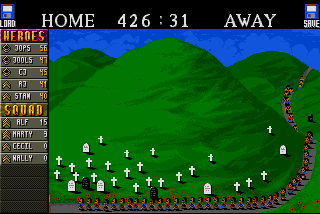
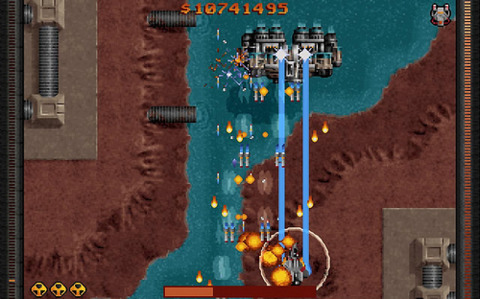
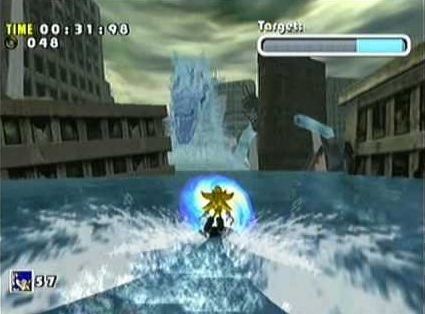
Log in to comment